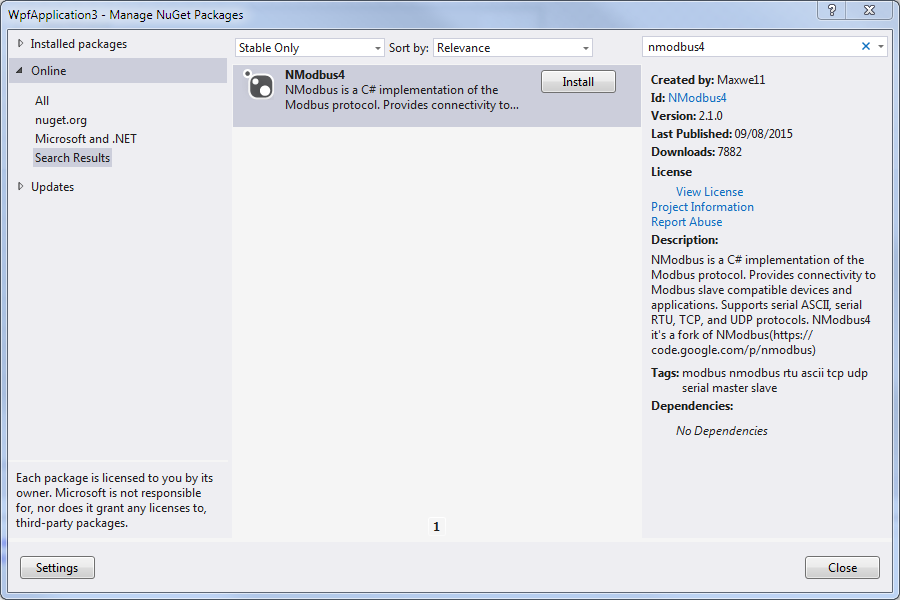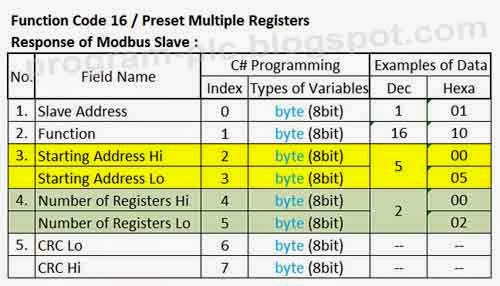
- Modbus rtu example how to#
- Modbus rtu example install#
- Modbus rtu example update#
- Modbus rtu example driver#
All of the data accumulated will be stored here This example code shows a quick and dirty way to get anĪrduino to talk to a modbus master device with a This is just an example taken from that library.
Modbus rtu example install#
You must install Modbus Library given here: Learn more about bidirectional Unicode charactersīefore you begin, make sure that you have the correct libraries installed. To review, open the file in an editor that reveals hidden Unicode characters. This is a quick and dirty example, but it will get you started until you will master WPF and Datacontext – Databinding mechanism.ĭownload the example for Visual Studio 2010.This file contains bidirectional Unicode text that may be interpreted or compiled differently than what appears below. Private void UserControl_Unloaded(object sender, e) To avoid the memory leak remember to subscribe to the event UserControl_Unloaded:Īnd to stop the timer in the event handler: There is a known memory leak with DispatcherTimer inside UserControls, because if it’s not stopped it will not release the UserControl and you will keep in RAM all the page that you visit. Void timer_Tick(object sender, EventArgs e) Timer_Tick(null, null) //this will refresh the textboxes before you show the page Timer.Tick += new EventHandler(timer_Tick) Timer.Interval = TimeSpan.FromMilliseconds(100)


To access to plc-variables inside the hmi pages, just declare a timer for each page, with a callback that updates the GUI objects with the plc-variables.ĭispatcherTimer timer = new DispatcherTimer() Private static void CommunicationThread() Static readonly object _locker = new object() T = new Thread(new ThreadStart(CommunicationThread)) this is an example of static constructor, that i don't need in this example and i leave it empty. To contain the variables and the communication thread you should use a static class. The “private set” means that the variable is read-only outside the class, and this is logic because you can’t write a plc-variable without write it in the plc before. Usually i declare a plc variable in this way: To write an Hmi and access to plc values i often use global static variables, that contains the values that i read from the plc.
Modbus rtu example driver#
The communication driver is usually synchronized with the plc, this means that the driver sends a request to the plc and waits until the plc answers the waiting time can be short or long, depending on the protocol and cable.Ī synchronized communication can be a pain for your graphic user interface, because it will lock the pages for the most of the time that’s why the communication has to be hosted on a secondary thread and plc-variables needs to be synchronized with the GUI thread. Once you created your pages, you need to develop the communication driver for your plc, or to use an existing driver.

– Plc driver: multithreaded communication to avoid to block the graphic user interface thread. – Plc variables: global static variables that can be read(-only) from all pages. – Graphical User Interface: written in WPF using the PageSwitcher class. The structure of the Hmi will be the following:
Modbus rtu example how to#
In this post i will make an example on how to write a simple Hmi (2 pages) that can access to a variable that get updated from another thread. Writing an Hmi with C# and WPF is quite easy, once that you know how to structure your project. In the series I implement a real plc driver for Siemens S7, a dummy plc driver so you can run the application (in part 2), and use PRISM and DI to architect the project in a very elegant and maintainable way. If you want to build your HMI with WPF and MVVM you can check also my new series HMI with C# and WPF.
Modbus rtu example update#
UPDATE : I see that this article is quite popular, however it takes a simple approach to get you started, by using timers and other shortcomings.


 0 kommentar(er)
0 kommentar(er)
